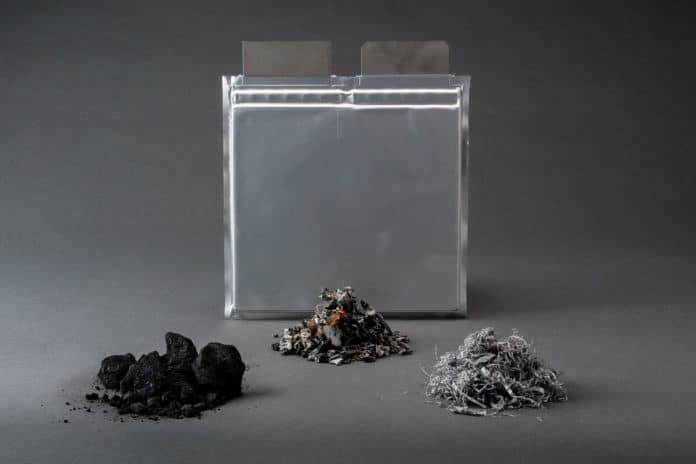As electric vehicles become more popular, they’re posing a new environmental challenge. The lithium-ion batteries in electric cars are expensive to manufacture and highly polluting if not recycled in a responsible way.
Now, the researchers at Michigan Technological University (MUT) have made a pivotal discovery that removes one of the biggest hurdles standing in the way of making recycling lithium-ion batteries economically viable.
With the increase in sales of electric vehicles, the number of batteries that will reach the end of their useful life in the coming years is going to be very large. Therefore, recycling is going to be a very important factor in the future. Because, in less than a decade, researchers estimate that each year, two million tons of lithium-ion batteries will be removed from electric vehicles at the end of their useful life.
The MUT team has developed an innovative process for separating the valuable materials that make up the cathode – a battery’s positively charged electrode – for reuse. The study seeks to make use of a technique commonly used in the mining industry to separate and purify ores. Called froth flotation, the process separates materials in a flotation tank based on whether they repel water and float or absorb water and sink.
But this approach does not easily translate to the world of lithium batteries because the materials that make up the cathode component, such as the commonly used lithium nickel manganese cobalt oxide (NMC111) and lithium manganese oxide (LMO), generally tend to sink. The MTU team has found that separation can be achieved by making one of the cathode materials, NMC111, float via the introduction of a chemical that makes the target material repel water.
Once the cathode materials were separated, the researchers determined through testing that the process had a negligible impact on the electrochemical performance of the materials. Both also maintained high purity levels of 95% or more, which will be critical for potential buyers of recycled materials.
“That’s very important,” says Jessica Durham, a materials scientist at Argonne and co-author of the study, “because if the battery industry is going to buy recycled cathode material to reuse in new batteries, they are not going to sacrifice purity.”
This research has been carried out in conjunction with the ReCell Center, the nation’s first advanced battery recycling research and development center, whose mission is to advance less energy-intensive processing methods and capture valuable materials for direct recycling – the recovery, regeneration, and reuse of battery components directly without breaking down the chemical structure.
The recycling technique proposed by both the University and ReCell, promises to have wide-ranging implications, such as reducing the cost of recycling lithium-ion batteries; spurring the growth of a profitable recycling market for end-of-life lithium-ion batteries; driving down the cost of EVs for both producers and consumers; enabling the United States to compete in the global battery recycling industry; strengthening U.S. energy independence by increasing the use of domestic sources of recycled battery materials, and reducing U.S. dependence on foreign sources of materials.
But the team is now focused on creating, step by step, a complete recycling process for lithium-ion batteries that is economically viable. Only then will it be widely adopted.
“Whatever method is used to do this recycling, the recycler has to be able to profit from it,” Durham says. “We’re putting the steps together knowing that, in the end, the total process is going to have to be profitable.”
